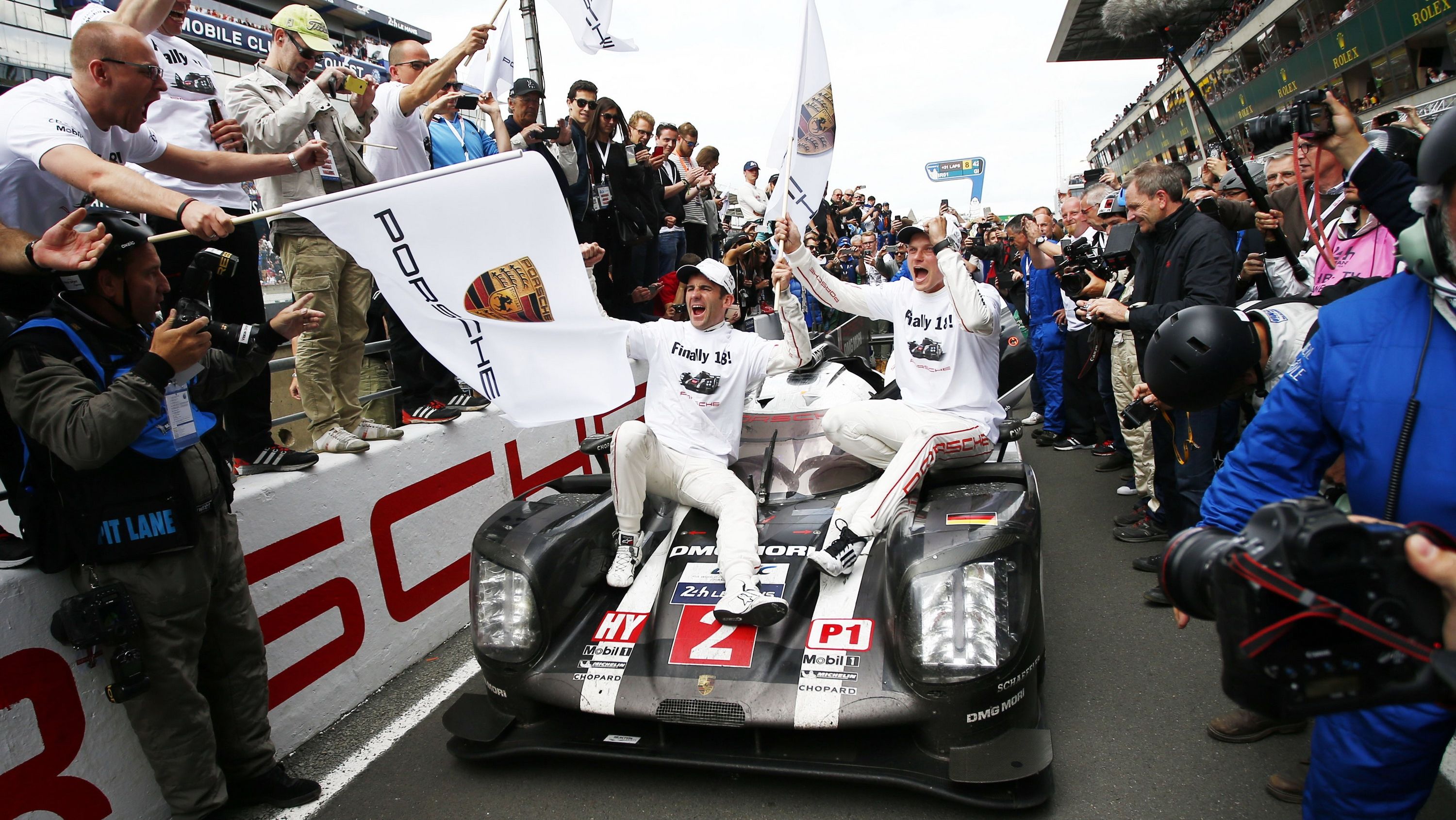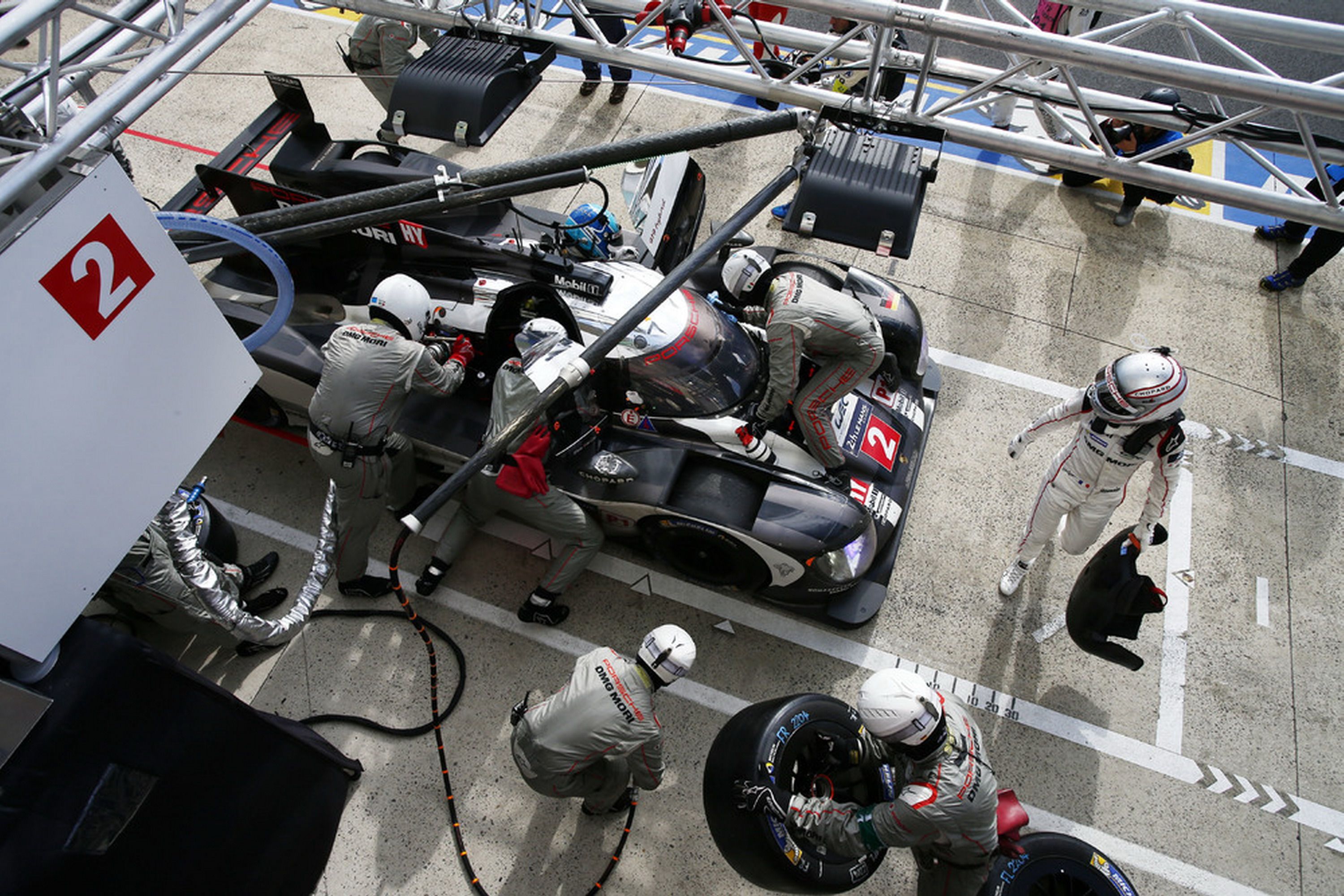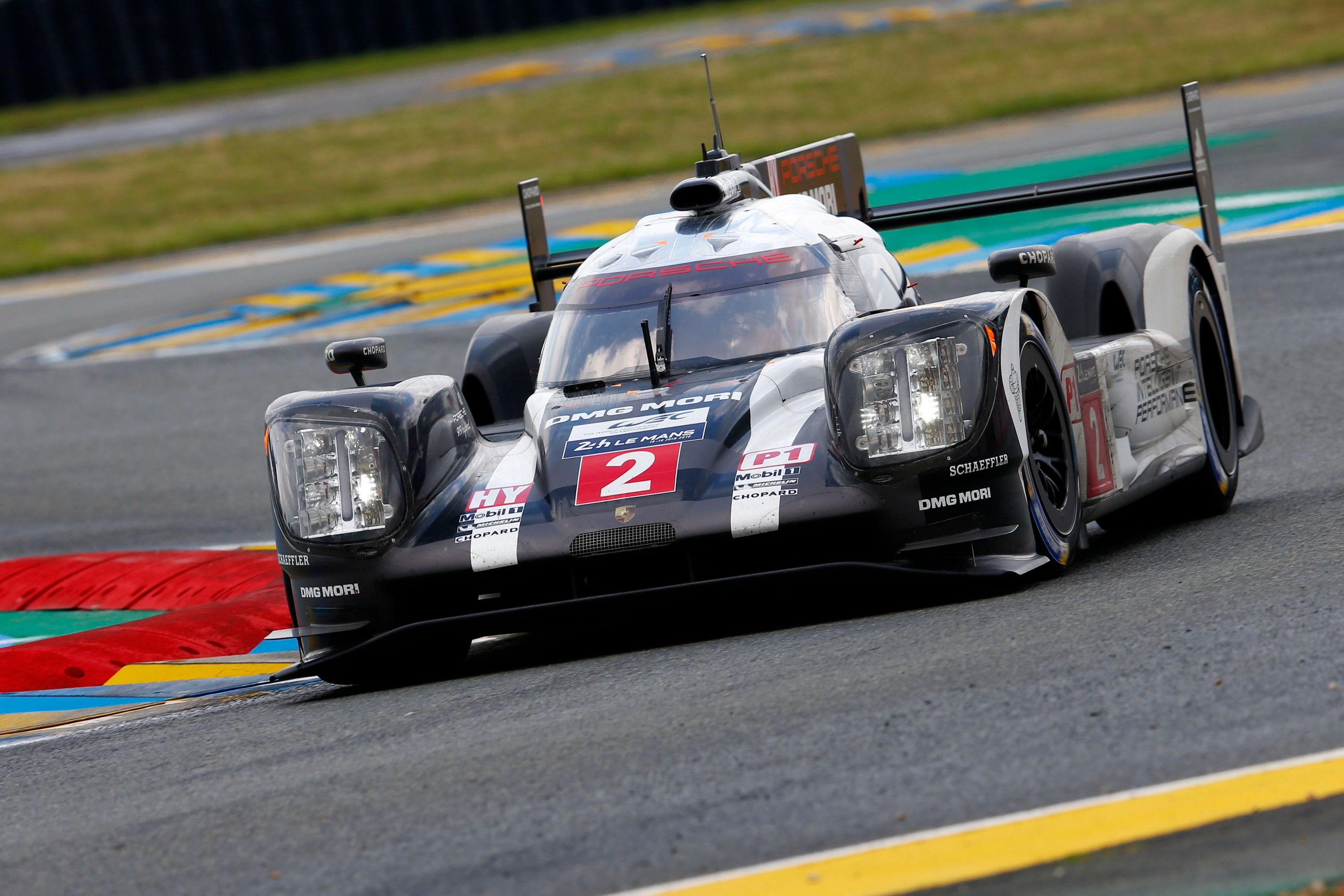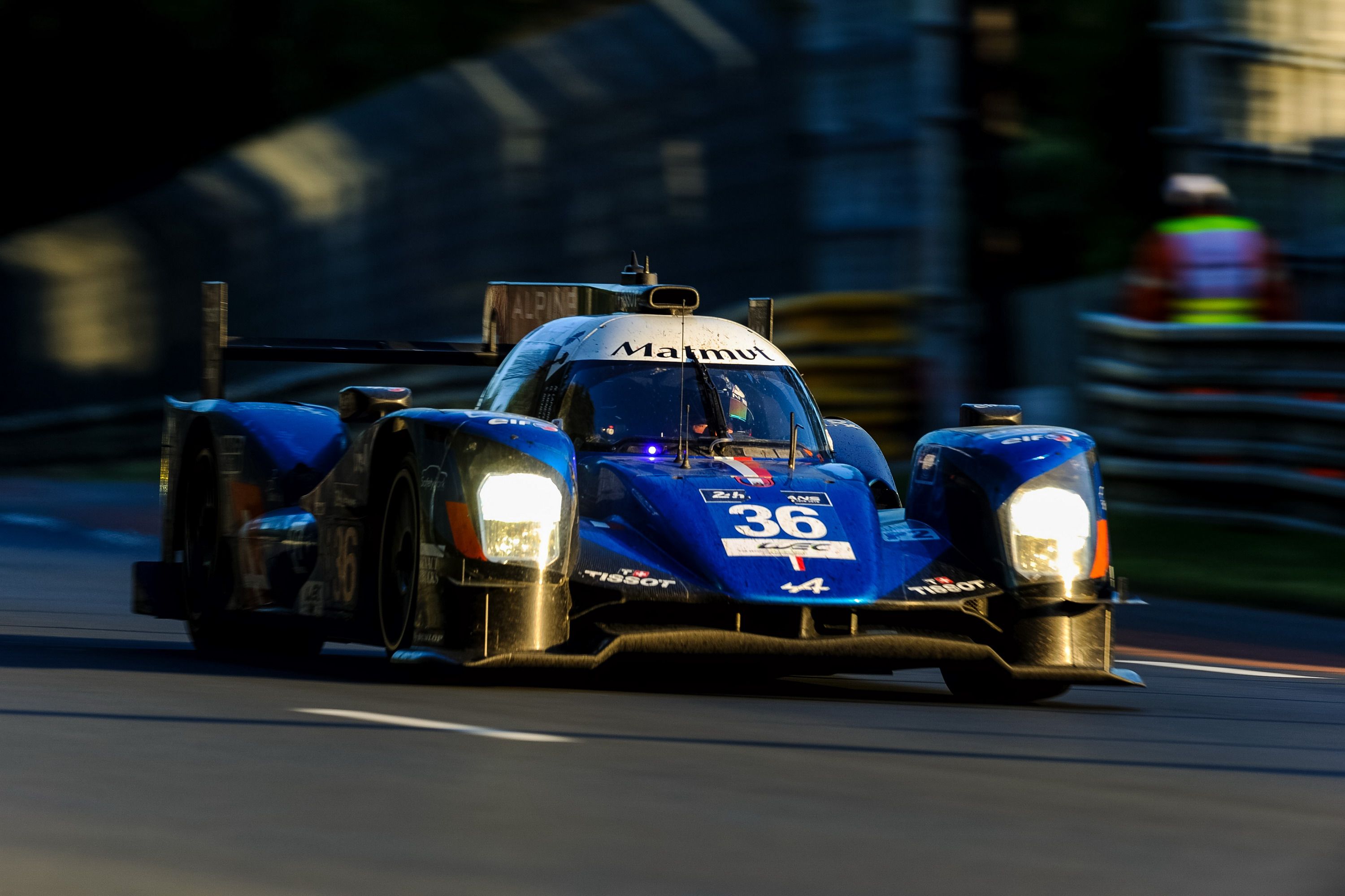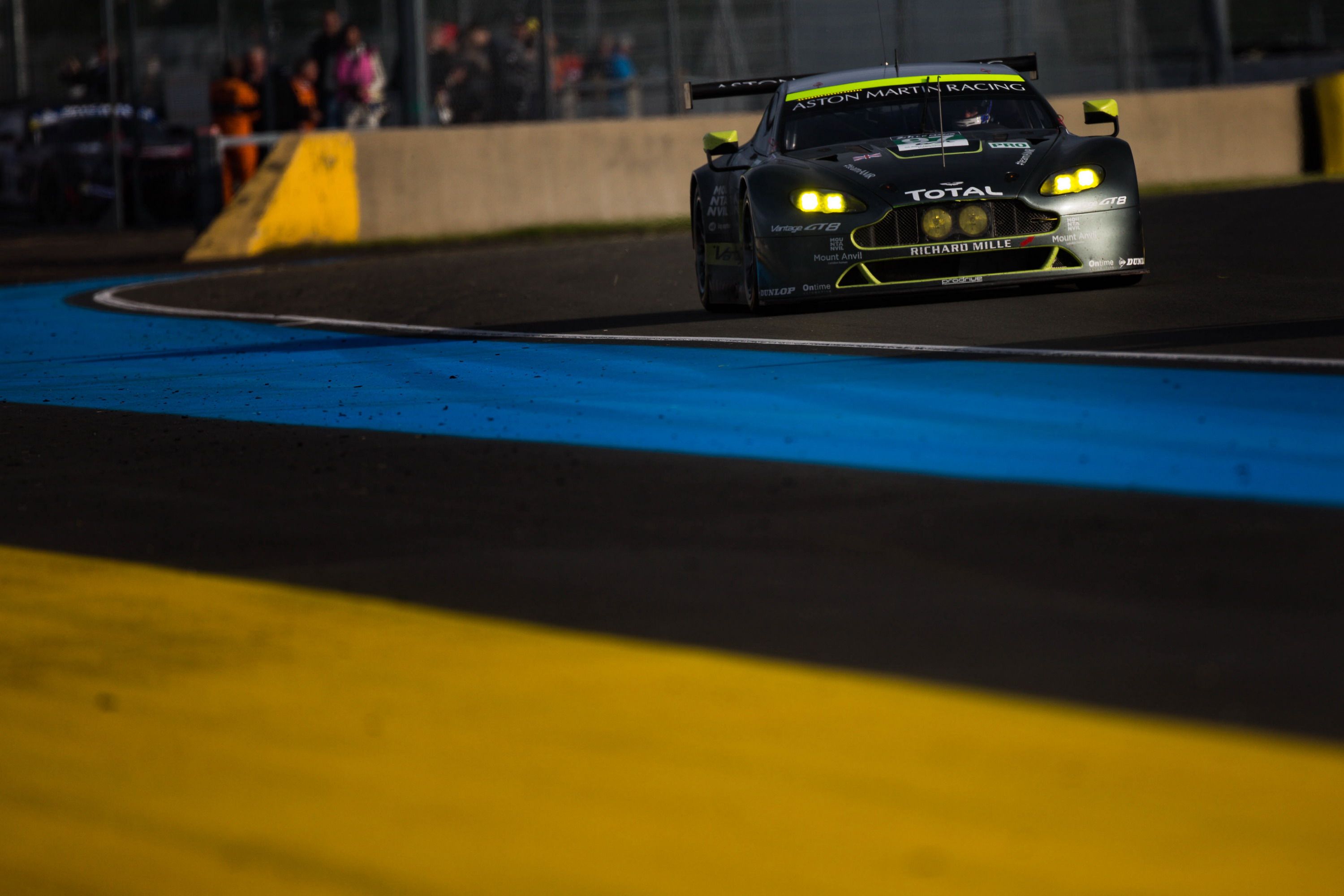Late race drama for Toyota that saw their hopes of a maiden Le Mans triumph vanish in thin air, only for Porsche to take their 18th overall victory, overshadowed the dominance of American teams over the GT classes in what might be one of the most dramatic Le Mans 24 Hours races to date.
Long-distance racing is often considered the hardest of all circuit-based types of racing and there’s no better proof than last weekend’s 84th edition of the famous Le Mans 24 Hours held on the Circuit de la Sarthe, in France. A record 60-car grid aligned for the classic test of man and machine which gathers the biggest crowds of all European motorsport events (in excess of 230.000 people attended the race in 2016). Everybody was welcomed with some not-so-welcoming weather in the days leading up to the weekend, the overcast sky adding to the somewhat dark tone of the GTE-Pro teams over the never-ending subject of the Balance of Performance.
The BoP, as it’s known, tried to even out cars with very different layouts: from mid-engined turbo’ed models to rear-engined naturally-aspirated ones and, also, the front-engined models as well. It doesn’t take an engineering genius to figure out that after all this BoP work is done some will be left unhappy while other will be quite comfortable with what they’ve got. On the former side stood Porsche, Aston-Martin and Chevrolet while Ferrari and Ford, with their mid-engined turbocharged racers, were the satisfied ones.
For those of you that have not been following endurance racing in 2016, the presence of Ford might come as a surprise, but the American manufacturer followed up on its promise to celebrate its first Le Mans victory, in 1966 with the Mk.II, in grand style by launching the race version of its new supercar – the GT. The car debuted at Daytona earlier in the year and, beyond a myriad of reliability problems, showed enough promise to get the Ford guys excited. Their excitement grew a lot more after the Laguna Seca round of the IMSA Weathertech Sportscar Championship where Ford won in the GT-LM class, not on pure speed, but on fuel efficiency. The WEC rounds followed where Ford was accused of hiding its true pace, some saying it used exceedingly long gears for the second round of the season at Spa-Francorchamps.
Continue reading for the full story.
Flash-forward to the Le Mans Test Day, which Porsche finished first overall, silencing those that were dead sure that the manufacturer’s decision to revert to the 2015-spec battery system in search of reliability will unsettle the car too much. There, the GTE-Pro class was won by last year’s winners, Corvette Racing, thanks to a best time of 3:55. Ford wasn’t near the front-runners so, in the wake of the Test Day, the Corvette was reeled back, while Ford and Ferrari were given some breaks by the ACO. This decision came under public scrutiny as Ferrari was the class of the field at both Silverstone and Spa, and the critics were soon proved right in the actual qualifying sessions.
These were scheduled on Wednesday and Thursday and Ford proved utterly dominant putting the first, second, fourth, and fifth best times, Ferrari filing in the third, sixth and seventh best times. The outcry following these sessions was so big that ACO took to the BoP for an unprecedented change that was meant to close the gap in the manufacturer-supported GT class where the slowest car, the Corvette, was as much as four seconds behind the pace-setting No. 68 Ford GT of Dirk Muller. It was decided that Ford’s mid-rev boost would be reeled back and the car would run 22 pounds heavier. Ferrari had their boost levels lowered as well but they’d have to run with 33 extra pounds. The slower cars were helped via weight breaks and some minimal increases in fuel tank sizes as well as bigger air restrictors (+0.2 mm for Corvette which was the spec they ran at the Test Day).
Come Race Day, the fans and racers were greeted by some ominously dark skies. Rain arrived quick enough, so the clerk of the course announced that there will be no rolling start as the cars would go on their way behind the Yannick Dalmas-driven Audi R8 Safety Car. Dalmas, a four-time Le Mans winner, amazed the car-loving part of the internet with an unintentional piece of driving antics on Thursday evening when, given the task of checking the track conditions, he aquaplaned coming down through the Esses, but managed to save the slide, proving that he’s still got it – if that was even questioned by someone.
After almost an hour under the Safety Car, the race finally got underway. Toyota proved to have picked the best tires in the early-race conditions and they took the lead from Porsche which found themselves struggling with their wets. As it dried out, Porsche and Audi clawed their way back, the #7 R18 leading the race briefly before going into the garage for 20 minutes as the team rushed to change the car’s turbo. This effectively ruled out Audi’s top challenger which returned to the track only to be hit by more bad luck as the race progressed. With Audi’s other car also suffering reliability problems throughout the event, it all came down to a battle between Porsche and Toyota.
LMP1
More precisely, it was to be between the No. 2 Porsche and the two Toyotas as the No. 1 car fell back before the half-way mark with water cooler issues which could have been related to a water pump failure. As the race progressed, it became apparent that this would be Toyota’s race to lose, the TS050 proving better on fuel and tires than the 919 Hybrid. The Cologne-built car was always able to go 14 laps on a tank of fuel while the Porsche could go no more than 13, although they were saving 3-4 seconds on each stop by putting less fuel on-board. This meant that Toyota would end the race with one, or even two, less pit stops unless Porsche changed their strategy.
To the surprise of many, they did. Towards the end of the race, the No. 2 began doing 14 laps on a tank of fuel, making many of those watching wonder why the Porsche crew didn’t do it from the get-go. Both Toyota crews ran superb throughout. Mike Conway was the stand-out driver in the No. 6 TS050 thanks to his opening stint on Saturday and the night stints on Sunday. Porsche weas no slouch, either. Marc Lieb and Neel Jani ran as good as ever, while veteran Romain Dumas managed a far better race than on previous occasions, the long-standing Porsche works driver often able to match Toyota for pace.
Sunday morning came about with a lot of drama further down the field but nothing seemed to be able to derail the No. 5 crew which pulled away considerably from the No. 6 and the No. 2 following some brilliant stints from Sebastien Buemi and Anthony Davidson. This proved helpful as Toyota’s second car had an off at Karting with ex-F1 driver Kamui Kobayashi behind the wheel. As a result of this, the No. 6 was wheeled into the garage for a few minutes to secure some body panels that were damaged during the night after a small clash with a back-marker and further unsettled by the spin in the sand bed.
The incident set the stage for the final two-hour-long duel between the No. 2 Porsche 919 and the No. 5 Toyota TS050, the latter having the upper hand. Porsche gave them all. The decision to quadruple stint the tires backfired late in the race, with Jani needing to do an unscheduled stop for new rubber. It seemed, then, with less than an hour to go, that Japan’s Nakajima would win for Toyota, over 30 years after the brand first arrived at Le Mans and three years after it last finished runner up.
It wasn’t meant to be though as, in a truly shocking sequence of events with less than six minutes to go, Nakajima started to slow down coming through the second chicane on the Mulsanne straight, the driver reporting that he’d lost engine power. The car slowed down gradually before grinding to a halt just after the finish line, one lap before the end. Everyone watching was left gobsmacked as Jani cruised past, Porsche pinching themselves the same way that Toyota were. Hughues du Chaunac, Toyota Team Boss, was seen crying in the box as he watched the victory slip away from his team with but a few minutes left to go.
Adding insult to injury, Nakajima was not even classified at the end due to the fact that he’d not completed the cool-down lap in under six minutes, Toyota Gazoo Racing’s only finishing car being the No. 6, which crossed the line second (the fifth time in Toyota’s history). Nakajima’s sudden loss of power, which might be traced back to the turbo losing boost pressure due to a burst intercooler pipe (although Toyota is yet to make an announcement on the cause of the incident), gifted Audi the last step on the overall podium – the German manufacturer continuing its unbroken streak of overall podiums since its debut in 1999.
Top 5 LMP1 standings
|
Ov. Position |
No. |
Team |
Drivers |
Laps |
|
1 |
2 |
Porsche Team |
Lieb/Dumas/Jani |
384 |
|
2 |
6 |
Toyota Gazoo Racing |
Sarrazin/Conway/Kobayashi |
381 |
|
3 |
8 |
Audi Sport Team Joest |
Duval/di Grassi/Jarvis |
372 |
|
4 |
7 |
Audi Sport Team Joest |
Lotterer/Fassler/Treluyer |
367 |
|
13 |
1 |
Porsche Team |
Bernhard/Hartley/Webber |
346 |
LM GTE-Pro
While many the main talking point following the race was the way that Toyota lost a deserved victory, another has been Ford’s dominance in the GTE-Pro class. As it happened, the BoP changes did not have the desired effect, Ford and Ferrari still proved to be the best in the 14-car category. Porsche was the only team to threaten the marketing-friendly Ford vs Ferrari fight, but their attack fell through as both the No. 91 and the No. 92 991 GTEs retired with technical problems (one blew its engine and the other developed suspension problems). Corvette proved to be the slowest of the lot, with the GM-backed team also losing a car on Sunday after Tommy Milner put a wheel on the grass and slid into the tire wall.
Aston-Martin climbed up to finish fifth and sixth following a disastrous run for Ferrari-blessed AF Corse team which retired both its 488 GTEs. The only Prancing Horse left to fight three Fords (the No. 67 out of contention early due to gearbox trouble) was Giuseppe Risi’s car. Vilander, Fisichella, and Malucelli could do no better than second at the end, the Finn’s spin at the exit of the Porsche curves with two hours to go effectively killing off any chances of a Ferrari victory -- making Ford’s job easier as Dirk Muller cruised to victory aboard the #68, sharing his victory with Joey Hand and Sebastien Bourdais. The No. 69 Ford came home third and the #66 fourth.
The result, undoubtedly amazing for a car in its first year of development, was marred by post-race protests by both Risi and Ford that did not change the finishing order although a final protest from Risi is still unresolved at the time of the writing. This protests talks about an alleged breach of the “7% rule” by Ford which was, according to Risi Competizione, outside of the GTE-Pro performance window. This rule enforces a seven percent performance gap between classes, which was apparently broken by Ford during the race. It is unlikely, though, that this final process will rob Ford of its victory.
Top 5 LM GTE-Pro standings
|
Ov. Position |
No. |
Team |
Drivers |
Laps |
|
18 |
68 |
Ford Chip Ganassi Team USA |
Hand/Muller/Bourdais |
340 |
|
19 |
82 |
Risi Competizione |
Fisichella/Malucelli/Vilander |
340 |
|
20 |
69 |
Ford Chip Ganassi Team USA |
Briscoe/Westbrook/Dixon |
340 |
|
21 |
66 |
Ford Chip Ganassi Team UL |
Pla/Mucke/Johnson |
339 |
|
23 |
95 |
Aston Martin Racing |
Thiim/Sorensen/Turner |
338 |
LMP2
The LMP2 class was a story of ORECA dominance, the French company’s 05 being the class of the field throughout the race. The busiest class of this year’s Le Mans 24 hours subdued to ORECA which did, in the end, take the victory, but with a car branded as an Alpine. The No. 36 finished with a three-minute advantage over the No. 26 G-Drive ORECA which lost out due to a penalty as well as some incidents.
Top 5 LMP2 standings
|
Ov. Position |
No. |
Team |
Drivers |
Laps |
|
5 |
36 |
Signatech Alpine |
Lapierre/Menezes/Richelmi |
357 |
|
6 |
26 |
G-Drive Racing |
Rusinov/Stevens/Rast |
357 |
|
7 |
37 |
SMP Racing |
Petrov/Shaitar/Ladygin |
353 |
|
8 |
42 |
Strakka Racing |
Leventis/Kane/Watts |
351 |
|
9 |
33 |
Eurasia Motorsport |
Jin/Gommendy/de Brujin |
348 |
LM GTE-Am
Americans also took class honors in GTE-Am, Scuderia Corsa’s assault ending with a dominant class victory as early contenders Abu-Dhabi Proton Competition faltered and came home third despite leading for a while. KCMG’s effort also fell short after engine trouble, while Aston Martin retired their quickest car which had Portuguese ace Pedro Lamy behind the wheel who was able to snatch the lead from Porsche in the second half of the race. AF Corse finished second with one of their cars, the super-successful 458 Italia also finishing fourth in the hands of the pole-sitting Clearwater Racing team. The two Corvettes in the class were just as uncompetitive as the newer-spec ones in the GTE-Pro class. Larbre Competition finished a lackluster seventh, which was a disappointment after two podiums in the first two WEC rounds. Le Mans returnee Johnny O’Connell had a difficult race in the AAI-entered C7.R, struggling all the way through with an unbalanced car that suffered from oversteer.
Top 5 LM GTE-Am standings
|
Ov. Position |
No. |
Team |
Drivers |
Laps |
|
26 |
62 |
Scuderia Corsa |
Sweedler/Bell/Segal |
331 |
|
27 |
83 |
AF Corse |
Perrodo/Collard/Aguas |
331 |
|
28 |
88 |
Abu Dhabi-Proton Racing |
Al Qubaisi/Long/Hansson |
330 |
|
30 |
61 |
Clearwater Racing |
Mok/Bell/Sawa |
329 |
|
33 |
86 |
Gulf Racing |
Wainwright/Carroll/Barker |
328 |
Garage 56
At the end of the day, I couldn’t end this article without mentioning the super-human effort of quadruple amputee Frederic Sausset who took part in the race as the “Garage 56” entry dedicated to innovative technologies. The car, an aging Morgan LMP2, was not innovative in any shape or form, the special bit being the system that gave Sausset the ability to drive the car, while also permitting two able-bodied drivers to drive as well. If you thought Alex Zanardi was fantastic at Spa in 2015, Sausset just topped that at Le Mans this year!

